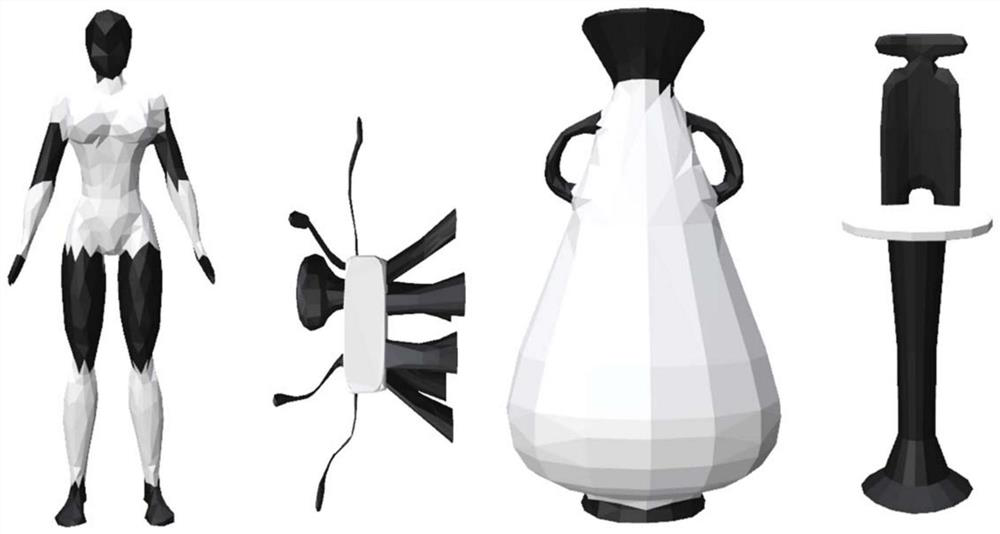Grid segmentation method based on graph convolution network
A grid segmentation and convolutional network technology, applied in image analysis, neural learning methods, biological neural network models, etc.
- Summary
- Abstract
- Description
- Claims
- Application Information
AI Technical Summary
Problems solved by technology
Method used
Image
Examples
Embodiment Construction
[0026] The idea of the present invention is: use the adjacency relationship of the faces in the grid to form a graph, use the graph convolutional neural network and feature embedding to learn features on this graph, and finally use the fully connected layer to obtain the scores belonging to each category for each face, Finally, the category to which each face belongs is predicted, which specifically includes the following steps:
[0027] Step 1: Transform the mesh model to the specified number of patches, and perform centering and scaling operations.
[0028] Step 2: Convert the model processed in step 1 into a graph representation, and perform preliminary feature extraction for each face and then input it into the trained corresponding graph convolutional neural network. For the type of part that each face in the grid belongs to Make predictions. Wherein, the graph convolutional neural network is composed of a transformation module, a graph convolution module, a feature em...
PUM
 Login to View More
Login to View More Abstract
Description
Claims
Application Information
 Login to View More
Login to View More - R&D Engineer
- R&D Manager
- IP Professional
- Industry Leading Data Capabilities
- Powerful AI technology
- Patent DNA Extraction
Browse by: Latest US Patents, China's latest patents, Technical Efficacy Thesaurus, Application Domain, Technology Topic, Popular Technical Reports.
© 2024 PatSnap. All rights reserved.Legal|Privacy policy|Modern Slavery Act Transparency Statement|Sitemap|About US| Contact US: help@patsnap.com










